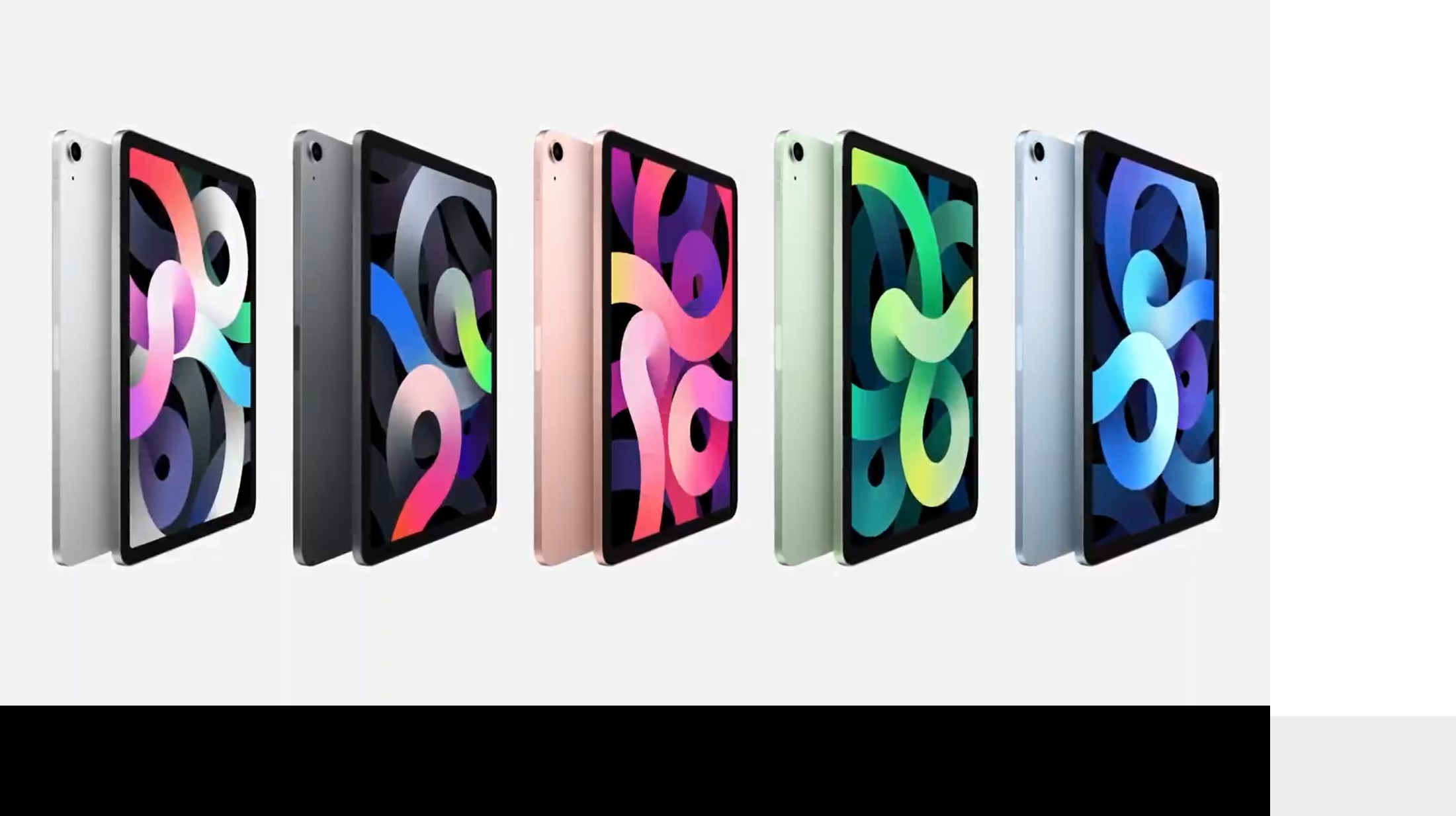Apple unveils iPad Air with 10.9-inch display, A14 chip and USB-C
The new tablet will start at $599

Apple unveiled today a new iPad Air at its "Time Flies” event. Long overdue from an upgrade, the fourth-generation tablet has a 10.9-inch, 2360 x 1640-pixel display, an upgrade from the 10.5-inch, 2224 x 1668-pixel panel on the previous model. The new screen comes with full lamination, an anti-reflective coating, and True Tone technology.
Apple removed the Touch ID sensor from the iPad Air and trimmed down its bezels to accommodate the larger display without making drastic changes to the physical size of the tablet.
- Best tablets in 2020
- iPad Buying Guide: iPad vs iPad Air vs iPad Pro vs iPad mini
- New iPad unveiled with A12 Bionic and iPadOS 14 — starts at $329
Better yet, the new power button on the side doubles as a Touch ID fingerprint reader for logging in without a password or pattern. The button uses a sapphire crystal lens and a steel enclosure with a sensor to authenticate a fingerprint.
Another welcome upgrade is the A14 mobile SoC powering the iPad Air. The previous iPad Air released in April 2019 used the A12 Bionic chip so this latest model should be more powerful and efficient than the previous. More specifically, the 5nm chip delivers a 40% increase in CPU performance, and with the new GPU architecture, you should get a 30% in graphics.
Battery life is rated at 10 hours so don't expect any major improvements to runtime. There is some good news, though: the iPad Air now charges via USB-C, not Lightning.
These changes bring the iPad Air closer to parity with the iPad Pro but the mid-tier tablet strips away some of the costly features meant for power users, including the three-lens setup on the rear of the Pro. Instead, the new iPad Air has a 7MP FaceTime HD camera on the front and a single 12MP f/1.8 lens, the same used on the iPad Pro.
The new Air also has new stereo speakers for better sound quality and the side has a magnet for housing and charging the Apple Pencil.
Sign up to receive The Snapshot, a free special dispatch from Laptop Mag, in your inbox.
The new tablet will start at $599 when it's released in October.
Phillip Tracy is the assistant managing editor at Laptop Mag where he reviews laptops, phones and other gadgets while covering the latest industry news. After graduating with a journalism degree from the University of Texas at Austin, Phillip became a tech reporter at the Daily Dot. There, he wrote reviews for a range of gadgets and covered everything from social media trends to cybersecurity. Prior to that, he wrote for RCR Wireless News covering 5G and IoT. When he's not tinkering with devices, you can find Phillip playing video games, reading, traveling or watching soccer.

